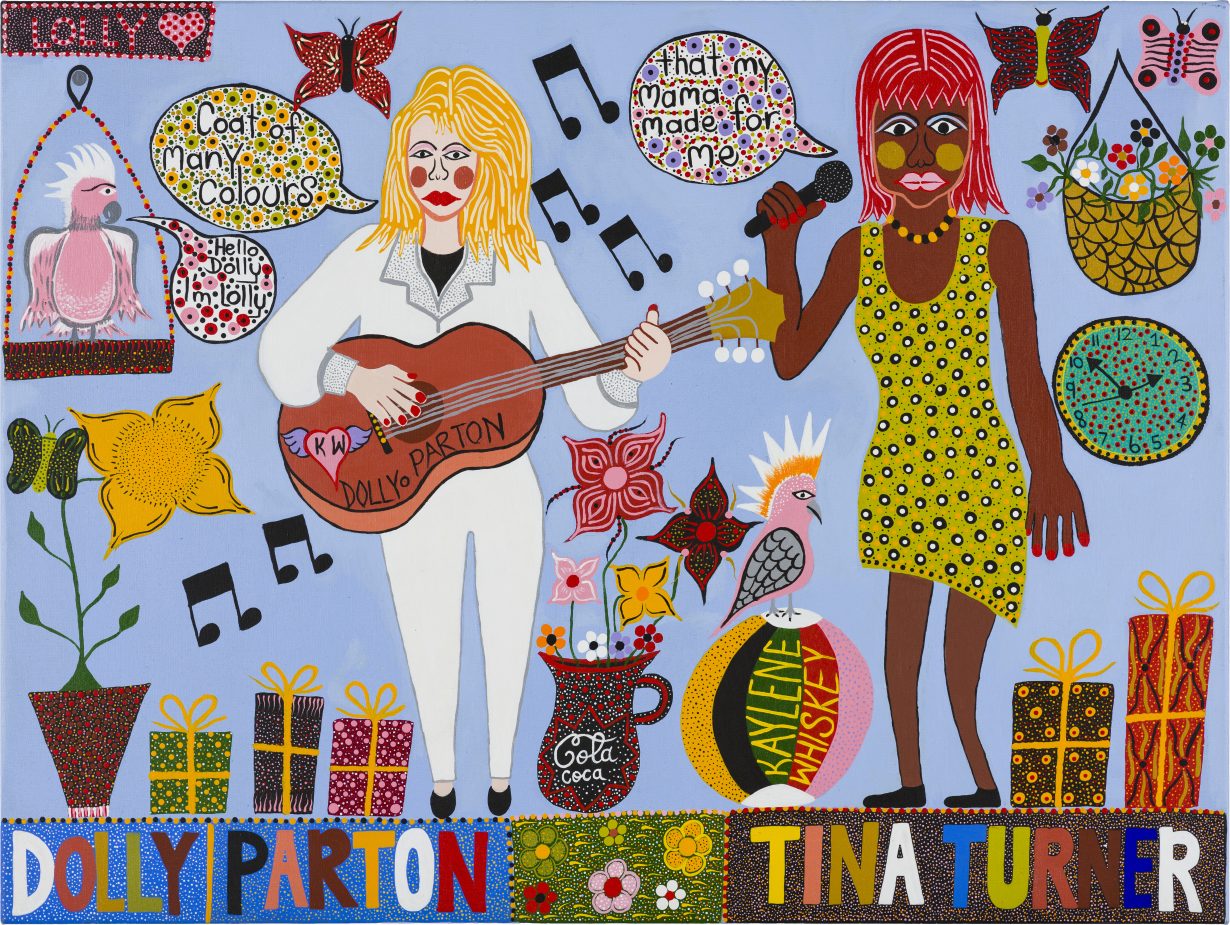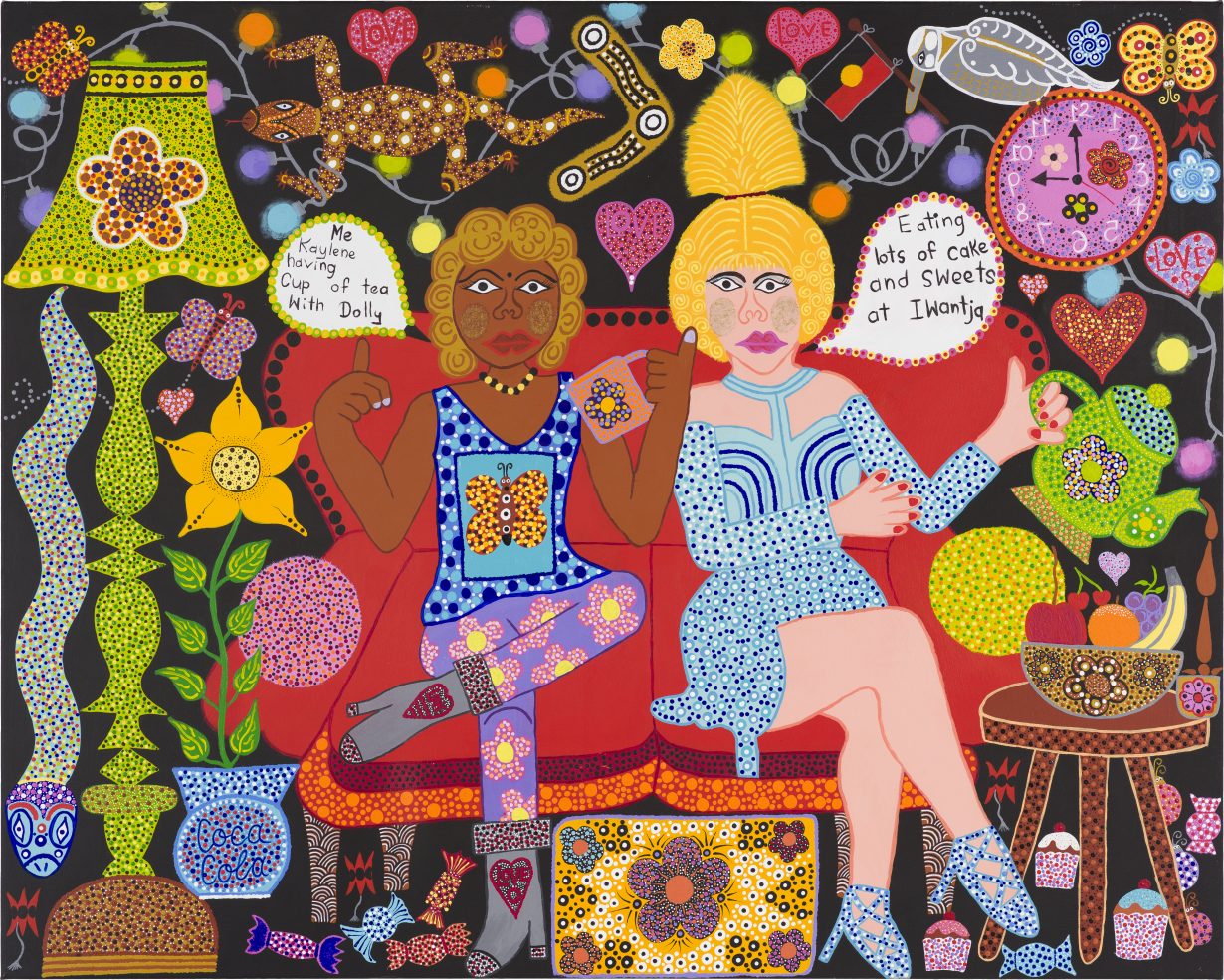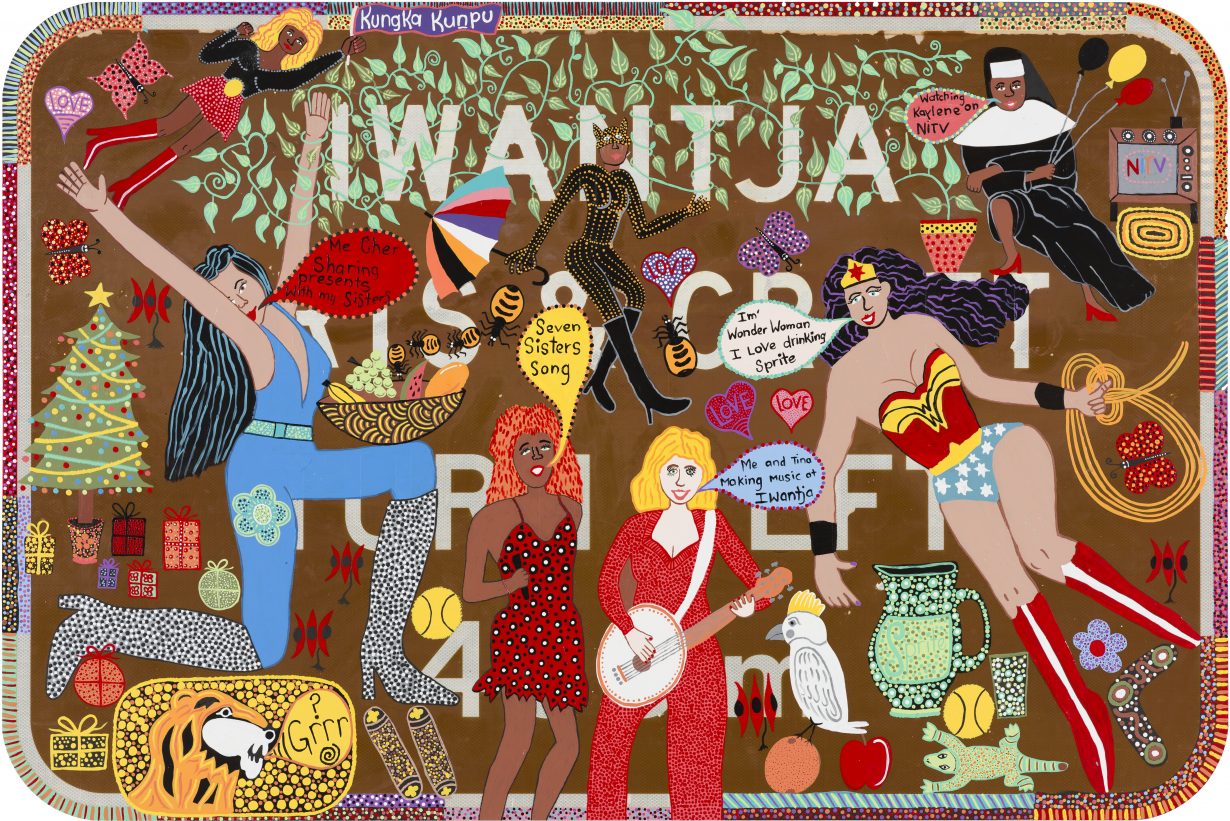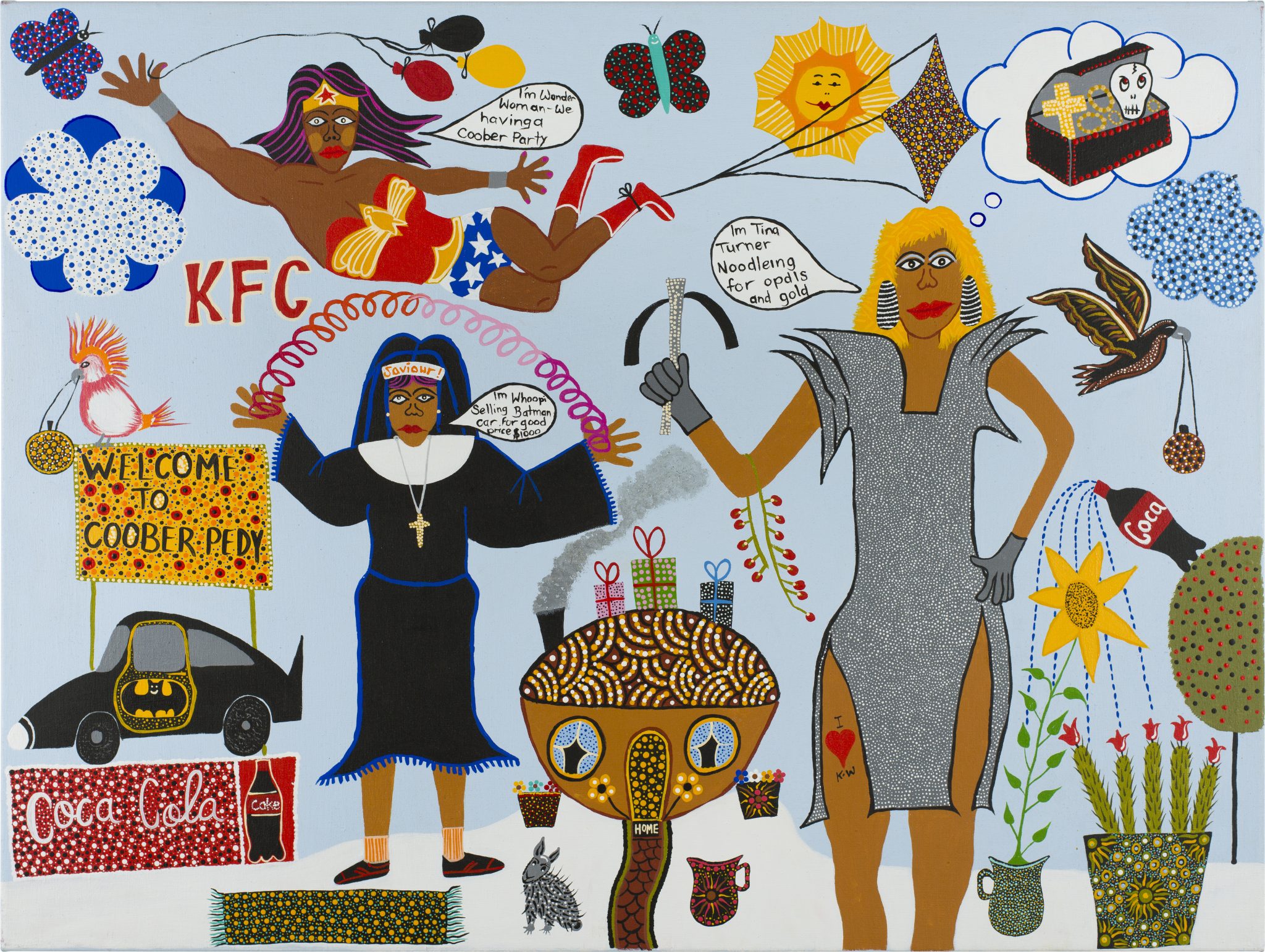The Yankunytjatjara artist brings female popstars and superheroes into dialogue with ancestral stories
Once there were seven sisters who descended from the sky. Upon landing on Earth, the sisters – known by various names, and called the Kungkarangkalpa by the Pitjantjatjara and Yankunytjatjara people of the Central Australian desert – were pursued by a group of lascivious men. The sisters chased them away using sticks. But one man, called Wati Nyiru, remained committed to stealing a woman from the group, to have as his wife. Wati Nyiru followed them across the land, spying, sneaking, setting traps and launching attacks. The eldest sister, however, guided her siblings in thwarting each of the lecher’s attempts. Eventually, having had enough of this nonsense, the Kungkarangkalpa devised a plan of escape, returning to the safety of the sky and taking refuge as a cluster of stars.

That songline is one of many Aboriginal creation stories that track their way across Australia’s landscape and, taken as a whole, map Tjukurpa – the creation period that forms the foundation of the Indigenous Australian worldview; some songlines describe the creation of geographical formations, flora and fauna local to the song’s area, as well as sacred sites, ceremonies and codes of living that are particular to a specific Aboriginal group, while others, like the story of the seven sisters, span larger expanses of terrain and are shared by multiple Aboriginal peoples.

Yankunytjatjara artist Kaylene Whiskey adopts female pop-culture figures as her sisters in Seven Sisters Song (2021), depicting the likes of Tina Turner, Cher, Wonder Woman and Cat Woman in brightly coloured enamel painted over a brown South Australia tourist attraction road sign for Iwantja Arts (an Indigenous-owned art centre, of which Whiskey is a member, in Indulkana, located in the Aṉangu Pitjantjatjara Yankunytjatjara – APY – Lands). Surrounding the cavorting women are various creatures, fruits, hearts, as well as a jug of Sprite, a TV and a Christmas tree. Whiskey’s paintings are a riotous affair, bringing together in exuberant celebration contemporary female icons (one of the characters painted in Seven Sisters Song brandishes a flag that reads ‘Kungka Kun-pu’, or ‘Strong Women’, a theme that courses through her work) and the ancestral stories of the artist’s Aṉangu culture.

But the giddy comics of Whiskey’s paintings also present a barbed commentary on the colonisation and subsequent mining of Indigenous land, and the ramifications of the market for precious stones. Coober Party (2019), an acrylic painting on linen, shows Wonder Woman, Whoopi Goldberg (as Sister Mary Clarence) and Tina Turner surrounded by plants, butterflies and clouds against a pale blue backdrop; but Tina holds a bejewelled mortar pick, and from her mouth blooms a speech bubble that reads, ‘I’m Tina Turner noodleing for opals and gold’ (nodding to Coober Pedy’s reputation as Australia’s opal capital, and the practice of fossicking around mines for scraps of precious materials), while a drifting thought bubble pictures a black chest containing a gold cross and an angry little skull. (References to Christianity and its role in colonising Australia, and later in creating the Stolen Generation of children of Aboriginal descent, are not lost.)

Elsewhere in Coober Party, a house spews out grey smoke, indicating the increase in pollution levels caused by industrial mining, while a mala (rufous hare wallaby) looks on; as ancestral beings the Mala are important to the Aṉangu people, providing guidance on how to steward the land and nurture relationships between humans, other animals and plants. At the edge of the painting, a bottle of Coca-Cola tips its contents into pots of flowering plants. The fizzy drink makes a frequent appearance in Whiskey’s works, including in a series of three animations made in 2019 for Artspace’s online programme 52 Actions: “Come, come to drink Coca-Cola!” croons Whiskey as figures and motifs from her paintings spin about on screen.
These themes are extended in her most recent videowork, Ngura Pukulpa–Happy Place (2022). The artist’s signature blend of the traditional and the pop-cultural are again fused as she and a group of seven female friends drive around (and sometimes fly around) partying in the desert and celebrating the joy of life, all the while exploring the complexity of contemporary identity. “My name is Kaylene Imantura Whiskey,” the artist chants, before transforming into the kind of glamorous global superstars and superheroes her paintings describe.
